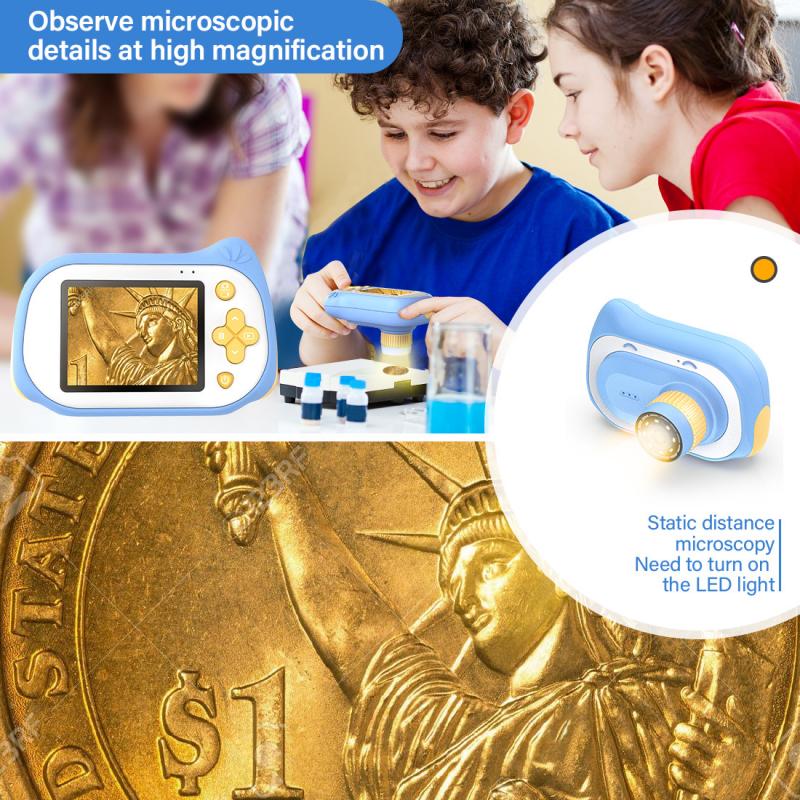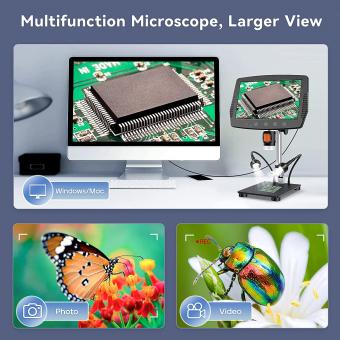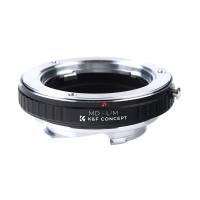Can We See Molecules With Electron Microscope ?
No, electron microscopes cannot directly visualize individual molecules. They are capable of achieving high magnification and resolution, but their imaging capabilities are limited to the visualization of structures at the atomic or nanoscale level. Molecules are much smaller than the resolution limit of electron microscopes, which typically range from a few nanometers to a fraction of a nanometer. To visualize molecules, other techniques such as X-ray crystallography, nuclear magnetic resonance (NMR) spectroscopy, or scanning probe microscopy are commonly used. These methods provide insights into the structure and properties of molecules at the atomic and molecular level.
1、 Electron Microscopy: Imaging Techniques for Molecular Visualization
Yes, we can see molecules with an electron microscope. Electron microscopy is a powerful imaging technique that allows us to visualize the structure and arrangement of molecules at a high resolution. Unlike light microscopy, which uses visible light to illuminate the sample, electron microscopy uses a beam of electrons to create an image.
Electron microscopes have the ability to magnify the sample up to millions of times, providing a detailed view of the molecular structure. This allows scientists to study the intricate details of molecules, such as proteins, DNA, and viruses, with unprecedented clarity.
In recent years, advancements in electron microscopy techniques have further enhanced our ability to visualize molecules. Cryo-electron microscopy (cryo-EM) is one such technique that has revolutionized the field. It involves freezing the sample in a thin layer of ice and imaging it at extremely low temperatures. This preserves the natural structure of the molecules and reduces the risk of damage from the electron beam. Cryo-EM has been instrumental in determining the structures of complex biomolecules, such as membrane proteins and large macromolecular complexes.
Furthermore, the development of advanced detectors and computational algorithms has improved the resolution and image quality obtained from electron microscopy. This has allowed researchers to visualize smaller molecules and obtain more detailed structural information.
However, it is important to note that electron microscopy has its limitations. It requires samples to be in a vacuum, which can affect the natural state of the molecules. Additionally, electron microscopy cannot directly visualize individual atoms within a molecule, as the resolution is limited by the wavelength of the electrons.
In conclusion, electron microscopy is a valuable tool for visualizing molecules and has greatly contributed to our understanding of their structure and function. With ongoing advancements in technology, electron microscopy continues to push the boundaries of molecular visualization.

2、 Limitations of Electron Microscopy in Observing Individual Molecules
We cannot see individual molecules with an electron microscope. Electron microscopy is a powerful tool that uses a beam of electrons to image the surface or internal structure of a sample at high resolution. However, it has certain limitations when it comes to observing individual molecules.
One of the main limitations is the size of the molecules. Electron microscopes have a resolution limit of around 0.1 nanometers, which means they can only resolve objects that are larger than this size. Most molecules, such as proteins and DNA, are much smaller than this limit and therefore cannot be directly visualized using electron microscopy.
Another limitation is the sample preparation. Electron microscopy requires the sample to be in a vacuum, which can cause the molecules to become distorted or damaged. Additionally, the sample needs to be stained or coated with heavy metals to enhance contrast, which can also affect the structure of the molecules.
Furthermore, electron microscopy is primarily a surface imaging technique. It provides detailed information about the surface topography of a sample but lacks the ability to visualize the three-dimensional structure of individual molecules.
However, recent advancements in electron microscopy techniques, such as cryo-electron microscopy, have allowed researchers to overcome some of these limitations. Cryo-electron microscopy involves freezing the sample in a thin layer of ice, which helps preserve the natural structure of the molecules. This technique has revolutionized the field of structural biology and has enabled the visualization of large macromolecular complexes at near-atomic resolution.
In conclusion, while electron microscopy is a powerful tool for imaging the structure of materials and biological samples, it has limitations in observing individual molecules. However, advancements in techniques like cryo-electron microscopy have expanded the capabilities of electron microscopy and have opened up new possibilities for studying the structure and function of molecules.

3、 Advances in Cryo-Electron Microscopy for Molecular Imaging
Yes, we can see molecules with an electron microscope, specifically with the technique known as cryo-electron microscopy (cryo-EM). Cryo-EM has revolutionized the field of molecular imaging in recent years, allowing scientists to visualize the structures of biological molecules at near-atomic resolution.
Cryo-EM involves freezing samples in a thin layer of vitreous ice, which preserves their native structure. The sample is then bombarded with a beam of electrons, and the resulting images are captured and processed to reconstruct a three-dimensional model of the molecule. This technique has been particularly successful in studying large and complex molecules, such as proteins and viruses.
Advances in cryo-EM have significantly improved its resolution and efficiency. The latest developments include the introduction of direct electron detectors, which have increased the sensitivity and speed of image acquisition. Additionally, new image processing algorithms and computational tools have been developed to enhance the quality of the reconstructed models.
One of the most significant breakthroughs in cryo-EM came in 2017 when the technique was awarded the Nobel Prize in Chemistry. This recognition highlighted the impact of cryo-EM in advancing our understanding of molecular structures and their functions.
However, it is important to note that cryo-EM has its limitations. It is not suitable for imaging small molecules or individual atoms, as their low electron scattering makes them difficult to detect. Additionally, the sample preparation process can introduce artifacts or distortions in the final images.
In conclusion, cryo-electron microscopy has revolutionized the field of molecular imaging, allowing scientists to visualize the structures of biological molecules at near-atomic resolution. The latest advancements in cryo-EM have further improved its resolution and efficiency, making it an invaluable tool for studying complex molecular structures.

4、 Exploring Molecular Structures with High-Resolution Electron Microscopy
Yes, we can see molecules with an electron microscope, specifically with a technique called high-resolution electron microscopy (HREM). Electron microscopy has been a powerful tool for imaging structures at the atomic and molecular level since its development in the 1930s. However, the resolution of traditional electron microscopes was limited to a few angstroms, making it difficult to directly visualize individual atoms within a molecule.
In recent years, advancements in electron microscopy techniques have allowed for the visualization of molecular structures with unprecedented detail. HREM, in particular, has emerged as a promising technique for studying the arrangement of atoms within molecules. By using a focused beam of electrons, HREM can achieve sub-angstrom resolution, enabling the direct observation of individual atoms and their bonding patterns.
The latest point of view in exploring molecular structures with high-resolution electron microscopy involves the use of aberration-corrected electron microscopes. These advanced instruments correct for the inherent imperfections in electron lenses, allowing for even higher resolution imaging. With aberration correction, it is now possible to resolve individual atoms within complex molecular structures, providing valuable insights into their three-dimensional arrangement.
Furthermore, recent developments in cryo-electron microscopy (cryo-EM) have revolutionized the field by enabling the imaging of biological molecules in their native, hydrated state. Cryo-EM combined with HREM has allowed researchers to visualize large protein complexes and even determine their atomic structures. This has opened up new avenues for drug discovery and the understanding of biological processes at the molecular level.
In conclusion, high-resolution electron microscopy, including techniques like HREM and cryo-EM, has greatly advanced our ability to see and study molecules. With the latest advancements in aberration correction and cryo-EM, we can now visualize molecular structures with unprecedented detail, providing valuable insights into the fundamental building blocks of matter.

































There are no comments for this blog.